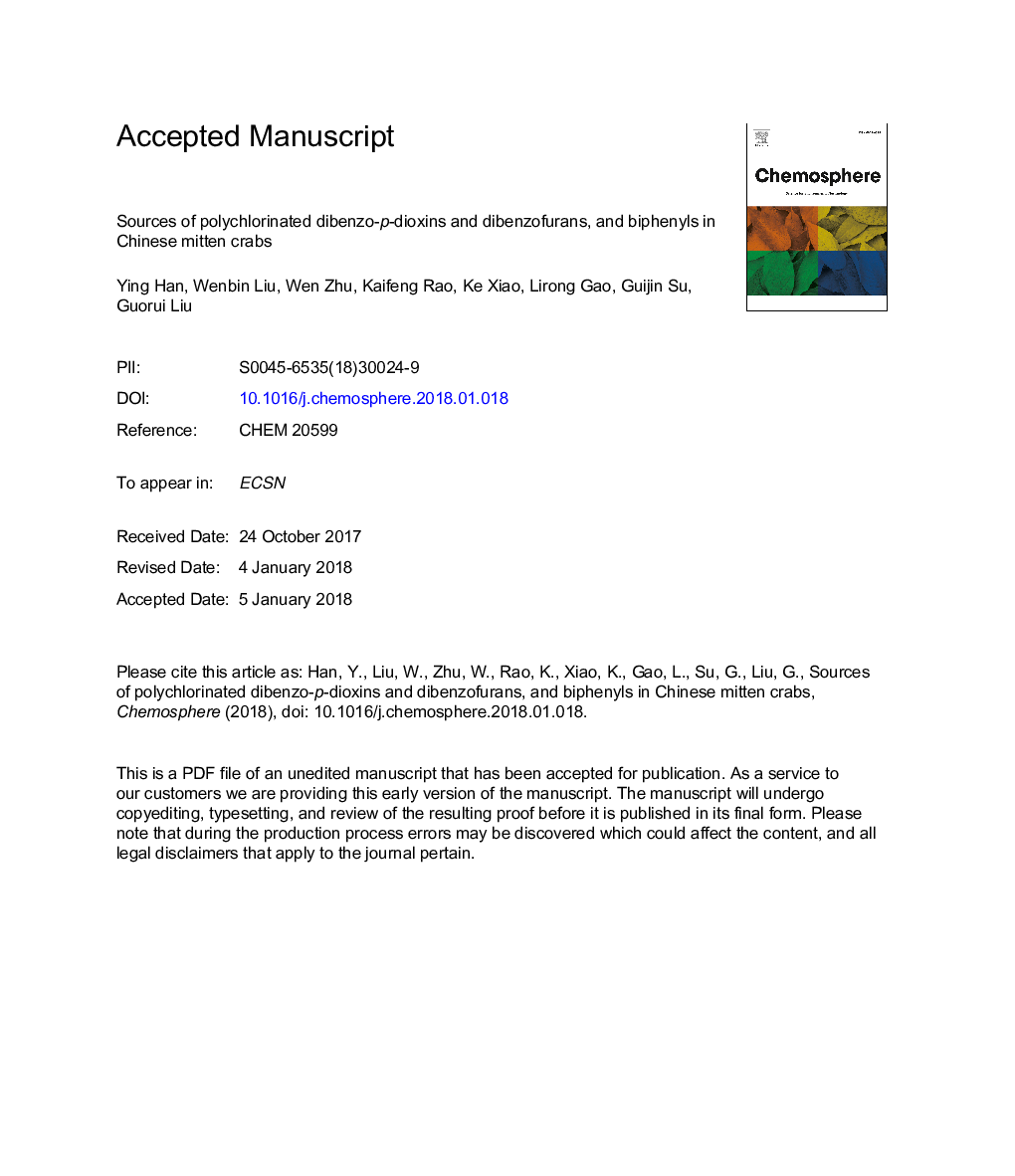| Article ID | Journal | Published Year | Pages | File Type |
|---|---|---|---|---|
| 8852083 | Chemosphere | 2018 | 37 Pages |
Abstract
Polychlorinated dibenzo-p-dioxins and dibenzofurans (PCDD/Fs) and polychlorinated biphenyls (PCBs) in Chinese mitten crabs from several areas were determined. The toxic equivalents (TEQs) for the mean PCDD/F and total PCDD/F and dioxin-like PCBs were 2.9â¯Â±â¯2.7 and 5.7â¯Â±â¯4.0â¯pg TEQ gâ1, respectively. The mean concentrations of PCBs and dl-PCBs were 282 and 59 times the concentrations of PCDD/Fs, respectively. PCDD/F and PCB sources in the crab food web were assessed. The total TEQ of PCDD/F and PCB supplied by crab compound feed was 2.1 times the TEQ in crab meat. Broken corn, aquatic biota, and water contributed around 12% of the total TEQ inputs for crab meat. The contribution from sediment was around 164 times that from crab meat, and sediment may be the most important source of PCDD/Fs and PCBs in cultured crabs. Principal component analysis (PCA) and stable isotope ratios for nitrogen (δ15N) and carbon (δ13C) supported the TEQ results. The mean total PCDD/F and dl-PCB TEQ exposure for humans consuming crabs was 3.4â¯pg TEQ per kilogram of body weight per day. The PCDD/Fs and PCBs in >80% of the crab samples would not cause the tolerable daily intake to be exceeded.
Related Topics
Life Sciences
Environmental Science
Environmental Chemistry
Authors
Ying Han, Wenbin Liu, Wen Zhu, Kaifeng Rao, Ke Xiao, Lirong Gao, Guijin Su, Guorui Liu,
